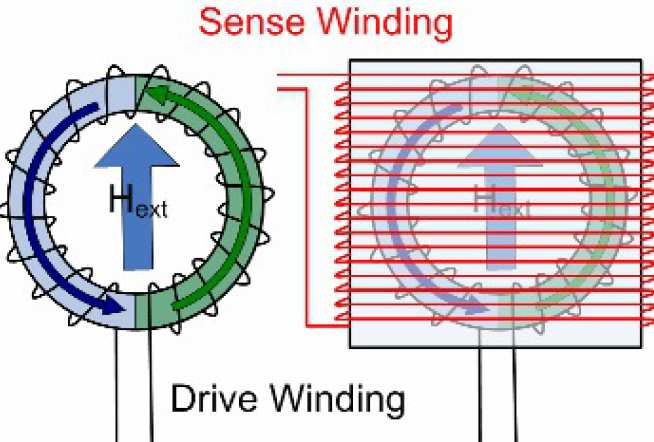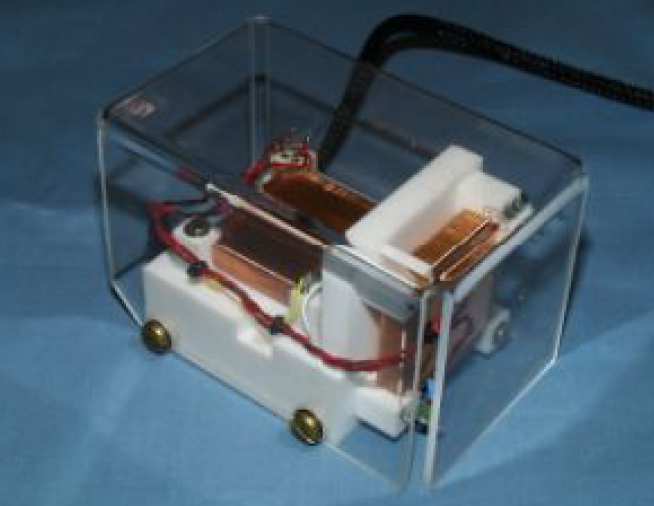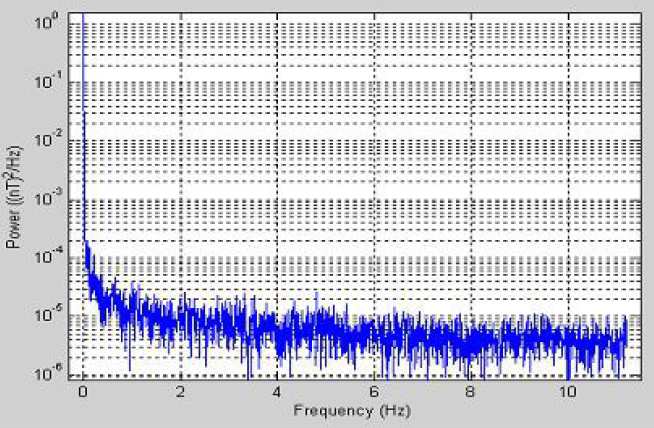Our laboratory has been involved in the design and build of radiation hardened Fluxgate Magnetometers for over twenty years. During this time we have optimised the design to produce one of the most stable and low noise models in-flight to date.
Fluxgate Magnetometers
How do they work?

Fluxgate sensors are typically ring cores of a highly magnetically permeable alloy (usually a few cm diameter for the low noise levels demanded by space applications). Two coil windings are wrapped around these cores: the drive winding and the sense winding (as shown in the figure). Some sensors will also have a third feedback winding, if the sensor is to operate in closed loop. Typically, there is one ring core to measure the field in each of the 3 axes.
- A periodic bi-polar current pulse is injected into the drive winding to drive the material around its B-H loop and deeply saturating the core in alternate directions (i.e. magnetised - unmagnetised - inversely magnetised - unmagnetised - magnetised etc.).
- The sense winding placed around the sensor picks up an induced voltage caused by changing flux within the coil as a result of an external field. This induced voltage appears as a signal at twice the drive frequency.
For more details on how a fluxgate works click here.
Detecting the signal

The drive frequency 'f', is typically tens of kHz and thus the induced '2f' will be twice that. Sense and detection electronics are required to extract magnitude and phase of the very small field proportional signal, to determine the field magnitude and direction. Signal amplification may be achieved either by use of a amplifier, tuning the sense winding so its is more sensitive at 2f or a combination of both. In this configuration we have what is known as an 'open loop' design. However usually the signal will be integrated and fed into a feedback winding to null out the field in the core for operation in 'closed loop' which improves linearity. Gain-switching is also employed to increase the dynamic range. Considerable effort is expended to remove the presence of harmonics other than 2f which could result in an increase in the noise level or cause unwanted offsets.
Current Status

Implementation of the sense electronics has traditionally been in the analogue domain, however recent advances in embedded devices has seen progress in development of digital fluxgates. For three axis measurement three rings cores are usually used but it is possible to only use two rings cores (with dual sense winding) as in the case of the Double Star instrument. Imperial College fluxgates have been shown to have very good offset drift and noise performance (<5pT/√Hz @ 1Hz). A typical noise spectra is shown in the figure opposite.
Fluxgate sensors will undergo a careful pre-launch calibration on ground usually in a low field or magnetic coil facility so that the sensors transfer function is accurately known and this provides an input into the in-flight calibration effort once the instrument is in orbit.